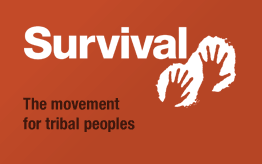7 April 2011 is World Health Day.
On the eve of World Health Day, Survival (the only organization working for tribal peoples’ rights worldwide) has brought to our attention the dire plight of uncontacted tribes facing the risk of massive population loss if their land is not protected.
“Tribes like the Amazon Indians shown in the incredible aerial footage released by Survival this year are likely to lose more than half their population if outsiders invade their land.”
The threats of wiping out of around 100 uncontacted tribes worldwide include:
- logging,
- oil exploration,
- hydroelectric dam construction,
- other projects and,
- uncontacted tribes have little immunity to diseases like flu and measles, and epidemics caused by contact can be devastating.
“Life in a bubble? A new film from Brazil’s isolated Zo’é tribe”
“After a devastating first contact in the 1980s, the Zo’é have bounced back.
The Brazilian government has gone to extraordinary lengths to protect them from disease, but do the Zo’é now live in a bubble, separate from the rest of society?”
Survival researcher Fiona Watson investigates as shown in the following video.

News Release
World Health Day: Uncontacted tribes at risk of massive population loss 6 April
Survival has warned on the eve of World Health Day (April 7) that uncontacted tribes face massive population loss if their land is not protected.
Tribes like the Amazon Indians shown in the incredible aerial footage released by Survival this year are likely to lose more than half their population if outsiders invade their land.
Around 100 tribes worldwide are uncontacted. Almost all are at risk of being wiped out by logging, oil exploration, hydroelectric dam construction and other projects.
Uncontacted tribes have little immunity to diseases like flu and measles, and epidemics caused by contact can be devastating.
In Brazil, the Panará tribe’s territory was invaded and bulldozed by road-building crews in the early 1970s. Waves of disease followed, and by 1980, 80% of the Panará were dead.
The population of the Great Andamanese of India’s Andaman Islands was around 5,000 when the British arrived in 1858 – there are now just 52 individuals.
The nomadic Nukak in Colombia numbered around 1,300 when they were contacted in 1988. Only 420 survive today.
In the Peruvian Amazon, more than 50% of the Murunahua tribe have died since illegal loggers forced contact on them in the mid-1990s.
One of the Murunahua survivors, Jorge, told Survival, ‘The disease came when the loggers made contact with us, although we didn’t know what a cold was then. The disease killed us. Half of us died. My aunt died, my nephew died. Half of my people died.’
Survival’s director Stephen Corry said today, ‘Unless it’s handled with extraordinary care, contact with these peoples means the eradication of over half their numbers. This has been documented again and again, so it’s difficult to believe that governments and companies remain in ignorance of it. If they persist in operating in uncontacted tribes’ territories, it’s equally difficult to see why they – and those of us who buy their products – shouldn’t be judged guilty for what happens.’
Notes to editors:
- Around 50% of the Nahua in Peru died, mainly from colds, flu and other respiratory infections, within a few years of Shell’s oil exploration on their territory in the early 1980s.
- The Matis in Brazil were contacted in 1978 – half of them died soon after. Five years later, only 87 Matis survived.
- The northern Aché in Paraguay numbered 550 when they were contacted in 1970. 200 had died by 1975.
- The Tupari in Brazil numbered 3,000 when they were first contacted in 1927. Seven years later, only 250 were still alive.
- Brazil’s Mebengokre tribe were contacted in 1936. Six months later their numbers had been reduced from 350 to 85.
- The Surui of Brazil were first contacted in the early 1970s. In 1971 there were at least 363 Surui, but three years after contact 193 of them had died.
